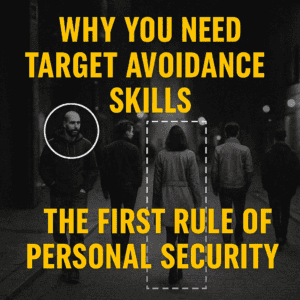In the field of safety and security, effective communication plays a critical role in addressing potential risks and concerns.
One essential aspect of communication is active listening.
When individuals actively listen, they show empathy and create a collaborative environment that enhances the overall safety and security of all involved.
Active listening not only involves paying full attention to the speaker but also prioritizing listening over speaking.
This enables safety and security professionals to gain a comprehensive understanding of the person’s concerns and react accordingly.
Moreover, active listening fosters trust and openness, which can lead to more effective identification and resolution of safety and security issues.
Utilizing this skill in conjunction with other strategies, such as following clear communication guidelines, has proven crucial in achieving safe and secure environments.
Not only does active listening promote collaboration, but it also improves the overall effectiveness of safety and security measures.
It encourages professionals to analyze the situation thoroughly and make well-informed decisions that take into account the viewpoints and concerns of all stakeholders.
By fostering an environment where open and honest communication is prioritized, active listening plays a substantial role in promoting safety, security, and overall organizational success.
Active Listening in Safety and Security
Again, active listening is a crucial skill in the field of safety and security.
It enables professionals to understand individuals’ issues, concerns, and potential risks, ensuring appropriate measures are taken to maintain a secure environment.
Importance of Active Listening in Crisis Situations
In crisis situations, effective communication plays a pivotal role in resolving issues and preventing further escalation.
The ability to actively listen and respond to the needs of those directly affected can promote a successful outcome.
Active listening can help security personnel evaluate the underlying problems, identify emotions, and uncover critical information that may be crucial in de-escalating the situation.
Developing Trust and Rapport with Individuals
Establishing trust and rapport with individuals who may be in distress or at risk is essential for gathering accurate information and providing appropriate support.
Active listening promotes empathy, creating a sense of understanding and validating the person’s feelings.
To achieve this, security professionals can utilize various communication techniques, such as paraphrasing, reflecting feelings, summarizing, and asking open-ended questions.
This approach fosters a supportive and non-judgmental environment, allowing individuals to feel safe in sharing their concerns and experiences.
Active listening allows professionals to accurately assess situations, develop trust and rapport, and ultimately, provide effective support and resolution for individuals facing crisis situations.
By leveraging these techniques, security professionals can better respond to and manage emergencies, ensuring a safe and secure environment for all involved.
Techniques for Effective Active Listening
Let’s take a look at several techniques to enhance active listening skills, ensuring that effective communication is maintained with clients, colleagues, and stakeholders in the risk strategy process.
Paying Attention to Non-Verbal Cues
Body language, facial expressions, and tone of voice can convey a lot about a person’s emotions and concerns.
By paying attention to these non-verbal cues, you can gain a better understanding of the speaker’s perspective and needs.
Consistent eye contact, a relaxed posture, and nodding in agreement are crucial for indicating that you are actively engaged in the conversation, helping to build trust with the speaker.
Reflecting and Summarizing
Periodically reflecting on and summarizing what the speaker has said is an excellent way to demonstrate that you have absorbed their message.
By presenting a concise synopsis, you offer a clear understanding of the situation and allow the speaker to clarify any inaccuracies if needed.
This practice fosters more effective communication and minimizes potential misunderstandings, essential aspects of a successful risk strategy.
Asking Open-Ended Questions
Open-ended questions are instrumental in encouraging the speaker to express themselves and discuss their concerns in more detail.
These questions typically begin with words like “how,” “what,” or “why,” and cannot be answered with a simple “yes” or “no.”
Using open-ended questions can help you gather more valuable information, leading to better-informed decisions and more effective risk management.
Clarifying and Paraphrasing
Clarifying and paraphrasing involve restating the speaker’s message in your own words to confirm that you have understood them correctly.
This technique is especially important in high-stress situations where clear communication is vital.
So, by practicing clarification and paraphrasing, you ensure that all concerns are adequately addressed, leading to more efficient and successful safety and security measures.
Implementing Active Listening in Security Training

One critical aspect of communication is active listening, which can be integrated into security training through various methodologies, such as role-playing exercises, workshops, and utilizing resources and materials.
Let’s look at the implementation of active listening within security training to ensure personnel can better address individuals’ issues and concerns.
Role-Playing Exercises
One effective training method for reinforcing active listening skills is through role-playing exercises.
Participants can practice communication scenarios they may encounter in their security roles, focusing on actively listening to the speaker, understanding their concerns, and responding effectively.
Role-playing exercises can be tailored to situations that might arise in the field, providing practical and relevant training experiences.
Active listening can be an essential tool for conflict resolution and can significantly contribute to success in security operations.
Active Listening Workshops
Active listening workshops can also be incorporated within security training.
In these workshops, security personnel can receive instruction from experts who can provide guidance and feedback on their active listening techniques.
Workshops emphasize the importance of maintaining an open and unbiased mindset when engaging with others, including understanding nonverbal cues and asking clarifying questions.
Resources and Materials
For a comprehensive training experience, make use of various resources and materials as part of the active listening curriculum.
These materials can include textbooks, articles from reputable sources, and online resources.
Incorporating active listening skills into security training is an essential step towards ensuring personnel are equipped to handle diverse situations effectively.
By utilizing role-playing exercises, workshops, and resources, security professionals can develop an invaluable skillset for maintaining safety and addressing concerns within their professional environment.
Best Practices and Recommendations
Managing Stress and Emotions
Active listening in safety and security settings requires managing stress and emotions, both of the listener and the speaker.
Effective communication can help prevent misunderstandings and ensure that safety concerns are addressed appropriately.
It is essential to remain calm, focused, and open-minded, allowing the speaker to express their concerns without fear of judgment or dismissal.
To manage stress and emotions during active listening:
- Establish a safe environment for honest communication.
- Be empathetic and understanding toward the speaker’s feelings.
- Maintain a neutral tone and body language.
- Take breaks if necessary to prevent overload or fatigue.
Addressing Barriers to Active Listening
Barriers to active listening can include time constraints, environmental distractions, or preconceived biases.
It is crucial to identify and overcome these barriers to ensure effective communication and promote safety and security.
Try avoiding interruptions, refraining from giving advice or imposing opinions, and dedicating time for reflective listening.
Some strategies to address these barriers include:
- Allocating sufficient time for meetings and discussions.
- Minimizing or eliminating distractions in the conversation space.
- Encouraging open and candid dialogue among team members.
- Practicing self-awareness to recognize personal biases and assumptions.
Continuous Improvement and Evaluation
Continuous improvement and evaluation of active listening skills are vital for safety and security professionals.
Regular self-assessment and feedback can help identify areas of improvement, allowing for continuous growth and development.
Steps for continuous improvement in active listening:
- Seek feedback from peers and supervisors on communication effectiveness.
- Attend workshops or training courses focusing on active listening and communication skills.
- Implement evidence-based practices and regularly evaluate their effectiveness.
- Stay current with industry trends and best practices for safety and security.
By following these best practices and recommendations, safety and security professionals can greatly enhance their active listening skills, ultimately leading to a safer and more secure environment.
Conclusion
Active listening plays a crucial role in ensuring safety and security.
By attentively attending to an individual’s concerns and issues, security professionals can identify potential threats and implement appropriate measures.
This approach reduces the risk of incidents and fosters a safer environment for everyone involved.
Education and training in active listening can enhance security professionals’ skills, enabling them to better understand and address the concerns of those they serve.
Adopting active listening techniques within the security industry can lead to increased trust and cooperation between security personnel and the public.
Improved communication can foster positive relationships and enhance community safety initiatives.
Implementing active listening strategies has multiple benefits.
In addition to promoting a proactive approach to safety and security, it enables security professionals to develop stronger connections with the people they protect, ultimately creating a more secure and safer environment for all.









